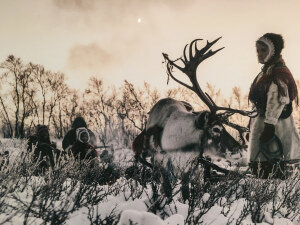Rudolph the Red-nosed Psychonaut
Could our beloved jolly St. Nick, the bearer of gifts, coca-cola and Black Friday sales, be the encapsulation of a sacred arctic mushroom?
The Amanita Muscaria mushroom, also known as fly agaric, is by far the most distinctive. With its bewitching vibrant red cap dotted with white circles, the mushroom appears alongside fairies, goblins and elves in fairy tale illustrations and throughout mythological folklore. With striking red and white colours associated with the festive season, what links does Amanita Muscaria have to the traditions of Christmas?
Despite Amanita being poisonous, historically the indigenous peoples of Siberia and Finland consumed the mushroom, in various ritualistic settings, for its intoxicating properties to experience altered states of consciousness. Processing methods were used so people could experience the hallucinogenic psychoactive effects of Amanita without toxic side-effects, for example, by making ointments and drinks with the dried mushrooms. In Eastern Siberia, users would even go as far as leaving the eating of the mushrooms in the hands of a shaman, and then drinking the shaman's urine.
Anthropologist John Rush described how shamans of the Sami people, the natives to the Lapland region, would collect Amanita muscaria, dry them and give them as gifts on the winter solstice. He also noted that because snow is usually blocking doors, there was an opening in the roof through which people entered and exited.
The Sami, native people of Lapland
A native figure from Lapland delivering presents through chimneys, sometime around the 25th December, certainly sounds like a familiar story. Could this imply the figure of Santa represents these practising shamans?
In support, research from Professor Carl Ruck at Yale University suggests the shamans would traditionally dress up like the mushroom, in red suits with white spots. Such finding leads to the question of whether Santa's well-known red and white outfit is simply a marketing scheme by coca-cola, or this dates back further to the clothes of mushroom-eating Sami shamans.
The reindeers which transport Santa across the sky on the night of Christmas eve, are known to actively seek out psychoactive properties of Amanita themselves. The affinity of Santa with reindeers may therefore reflect a spiritual connection between the shaman and their reindeers, with both venturing together on mental voyages to different dimensions. Furthermore, flying reindeers could certainly be encapsulating a mushroom-produced hallucination. And what about Rudolph's infamous red nose? Is it too tenuous to suggest this imagery could even be based on an Amanita cap?
Another fitting piece of this puzzle is the symbiotic relationship between the Amanita Muscaria with conifer trees. These means in Northern hemispheres, where Amanita traditionally grow, they grow underneath pine and fir trees, as the trees and fungus support each other's survival.
Suppose Amanita Muscaria are gifts from shamans, and the shamans "gifts" naturally grow under the types of tree associated with Christmas trees. In that case, the idea of Santa leaving presents under the tree on Christmas eve is very fitting with this serendipitous tale.
The links between Amanita and Christmas traditions certainly provide a romantic notion that the origins of Christmas stem from a timeless mythical mushroom. However, these interpretations of shamanic practices are not historical facts. And just because there are similarities between Amanita rituals and Christmas, this does not in any way prove they are directly related. The tradition of Santa is wide across the globe with many different cultures and traditions, from the Vikings to ancient Turkey, playing a part in the development of such folklore. Perhaps Santa is Amanita, perhaps Santa was influenced by Amanita, or maybe there is no relation at all.
Whatever role Amanita played in developing the Christmas tradition, I think there are still lessons to be learnt. A "gift" from a shaman means an experience, an opportunity to learn more about oneself and grow. These shamans left gifts without any obligation, but simply because they wanted to share with others a tool for healing and self-expansion. When we give presents to others over Christmas, why are we buying gifts and what purpose do they serve? The simple clicks of Amazon parcels, or last-minute runs to Tescos to grab a box of chocolates, for the mere sake of pressure to buy relatives and friends material items, is normality. Maybe by considering what it is that we want to share with others, and what we want others to experience from gifts, this could reshape the way we think about giving to others at Christmas.




